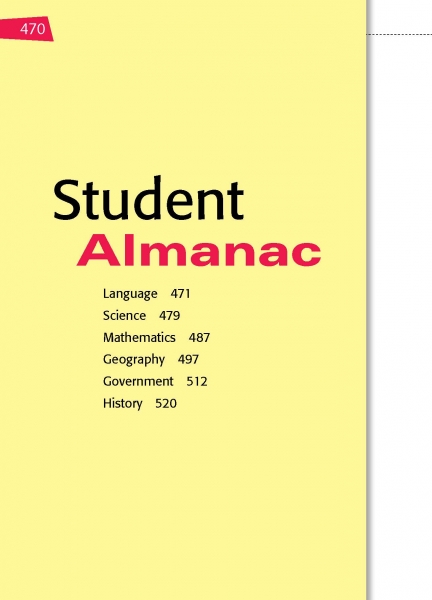Page 470 from

Start-Up Activity
The “Student Almanac” is a cross-curricular source of information that your students will learn to love. This section is organized under six subject areas (language, science, mathematics, geography, government, and history). Students can learn sign language, study the “American to Metric Table,” learn how to solve word problems, refer to world maps, and have access to important facts about U.S. government. There is also a time line featuring historical facts about science, inventions, literature, and more. English Language Learners will find the glossary of terms on pages 492–496 especially helpful in their math studies.
Consider this activity to introduce the almanac: Divide the class into six groups, assigning one of the almanac sections to each group. Ask each group to think of interesting and fun ways that they could introduce the information to the class. Then after appropriate planning time, have each group make their presentation.
Think About It
“Knowledge is of two kinds. We know the subject ourselves, or we know where we can find information upon it.”
—Samuel Johnson